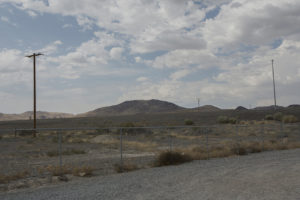

I’ve been living in Shantiniketan for six months now, a decision sped up in light of the pandemic. Clearly, I wasn’t the only one who fled the city where access to food and even drinking water were concerns during the first two weeks of lockdown.
Nobel-laureate Rabindranath Tagore shaped Shantiniketan into a place of legends (translated literally as abode of peace). Located a short train ride from Kolkata in West Bengal, India; this university town prides itself in art and culture and borders protected Indigenous land which, even today, is only available to lease (for a maximum of 999 years).
When I first arrived, this new home, along a quiet lane and just moments from an expanse of rice paddies, truly captured that idyllic sense of paradise. Train service from the city was still stalled through lockdown measures, and many tourist-driven businesses remained shuttered. It felt like I’d moved into heaven compared to the urban box I’d been trapped inside of since March of 2020. Here, I could peck around in the garden, watch monkeys and parrots in my backyard, and go on evening bike rides without ever disrupting social distance.
But, quite rapidly, it all began to change. The speed of development in this area has been moving at a shocking rate. Now, tractors filled with construction materials roar by this house one or two dozen times a day. The adjoining park which was a bird watcher’s paradise is now filled with picnickers who turn their bluetooth speakers up to full blast. The iconic red dirt roads that I would ride nearly every afternoon have been expanded, flattened, and black gravel laid down in preparation of paving. A lane behind my home is turning into a development project with vacation homes and hotels popping up by the handful.
In such a short window of time, I can see how my plans to create a peaceful artist retreat/residency must be carefully orchestrated to avoid the crushing pressure of over-development. Recently, after viewing properties to consider for such a space, I was shocked at the price of land, which was far more expensive than what I would expect to pay back in the United States. Making it worse, I later realized that I was in such a state of disbelief, that I mentally removed a zero from the actual price. Even before realizing that mistake, another problem cropped up when the sellers could not produce documents with proof of ownership. I’ve heard of the presence of a land mafia from a few different people now; as well as cheaters trying to sell vacant land that they aren’t the proper owners of; and also Indigenous lands getting sold when they are only supposed to be available to lease.
All the while, people are buying up land at an alarming rate, shooting its value through the roof and destroying the very essence that this region is celebrated for. A friend was sharing his conversation with some environmentalists who were concerned that the natural water supply here could be depleted within a decade if development continues at such a rapid rate.
This is all very new to me, but I’m jotting these notes down in my journal in case this turns out to be a long-term project. There’s a lot to unwind: growing population, inequitable access to resources, fractured Indigenous lands, destructive presence of tourists, litter, noise pollution, development, skyrocketing prices, stressed natural resources…not to mention, what it means for me to be a new resident here, a Westerner with access to foreign funds, interested in purchasing land, and therefore a part of the problem (which has me questioning if it is ethical for me to buy into this trend…perhaps it’s time to pack up my dream and consider other locations).
If you have any thoughts or resources on the matter, I’d love to hear about it. While looking at land, I asked the local guide if the sale would be exploitative in any way. He huffed. They want to sell, he insisted. Still, lessons in history tell me these ancestral landowners may profit in the short-term, but stir deep concerns on what it may mean twenty, fifty, one hundred years into the future.




Leave a Reply